 |
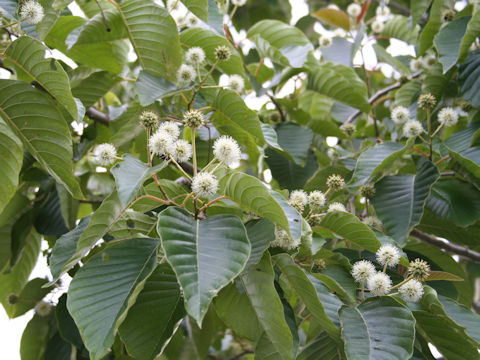

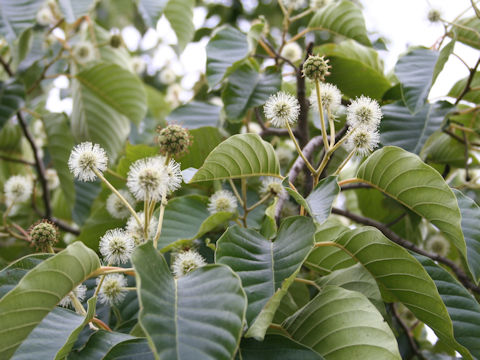

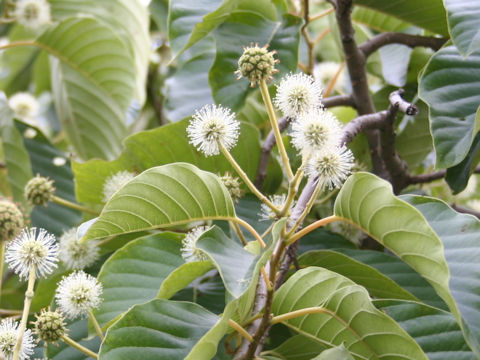

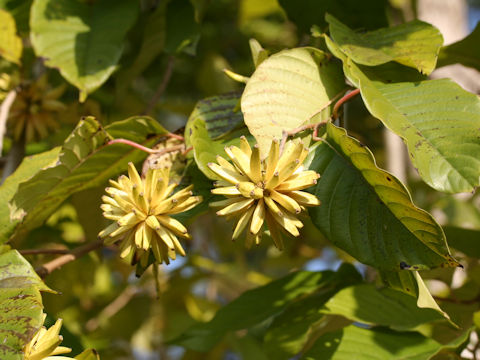

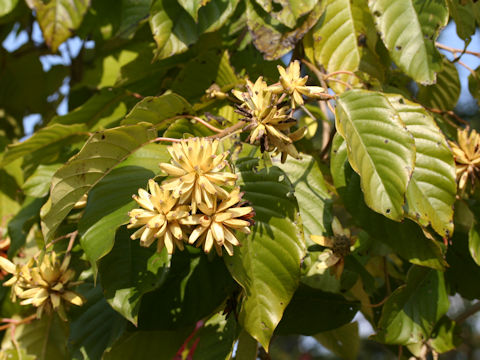

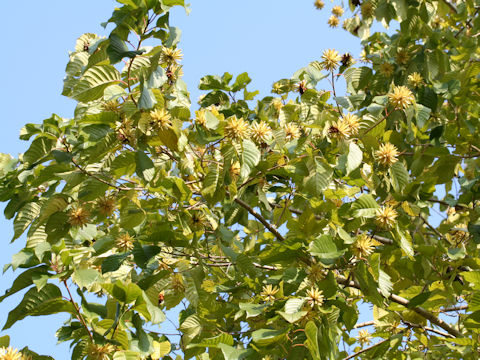

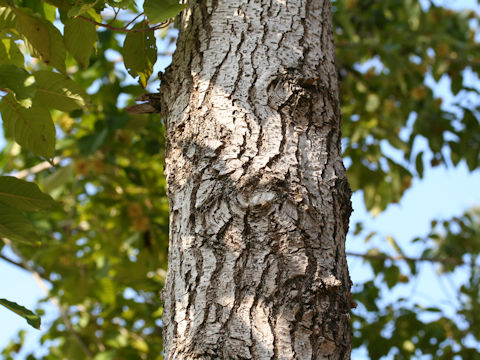

|

|
中国の中南部、雲南省からチベットに分布しています。わが国へは大正時代に渡来しました。高さは20〜25メートルになり、楕円状卵形から長楕円形の葉が互生します。葉の先端は尖り、縁は波打ちます。7月から8月ごろ、枝先に3〜5個球形花序をだし、小さな花を咲かせます。雌花序は頂生し、雄花序は側生します。果実は集合果で、秋に淡い黄褐色に熟します。果実や根には、アルカロイドのカンプトテシン(Camptothecin)が含まれ、抗ガン剤の原料になります。別名で「きじゅ(喜樹)」とも呼ばれます。中国語では「喜樹(xi shu)」です。
|

|
オオギリ科カンレンボク属の落葉高木で、学名は Camptotheca acuminata。英名は Xi shu、Cancer tree、Tree of life、Happy tree。
|

|
The Xi shu (Camptotheca acuminata) belongs to the family Nyssaceae. It is a tall deciduous tree that is distributed from Yunnan Province in central and southern China to Tibet. This tree came to Japan in the Taisho era (1912-1926). It can reach 20-25 m in height. The leaves are elliptic-ovate to oblong and alternate. The tips of the leaves are sharp and the edges are wavy. The 3 to 5 spherical inflorescences are borne on the tip of the branch and small flowers bloom from July to August. The female inflorescences are apical and the male inflorescences are lateral. The fruits are aggregate and ripen in pale tan in fall. The fruits and roots contain the alkaloid Camptothecin, which is a source of anti-cancer drugs. In Chinese, it is called "喜樹" (xi shu).
|

|
[上・中1〜2] 京都府宇治市「宇治市植物公園」にて、2005年08月05日撮影。
[中3〜5・下] 兵庫県加西市「兵庫県フラワーセンター」にて、2005年11月25日撮影。
|








